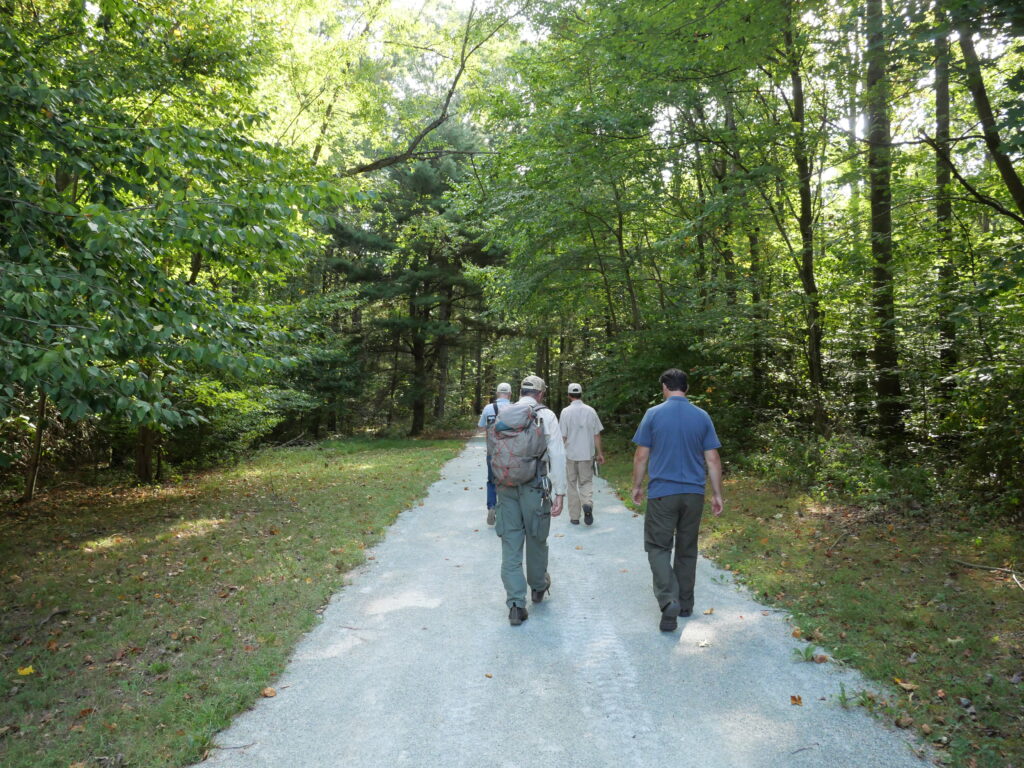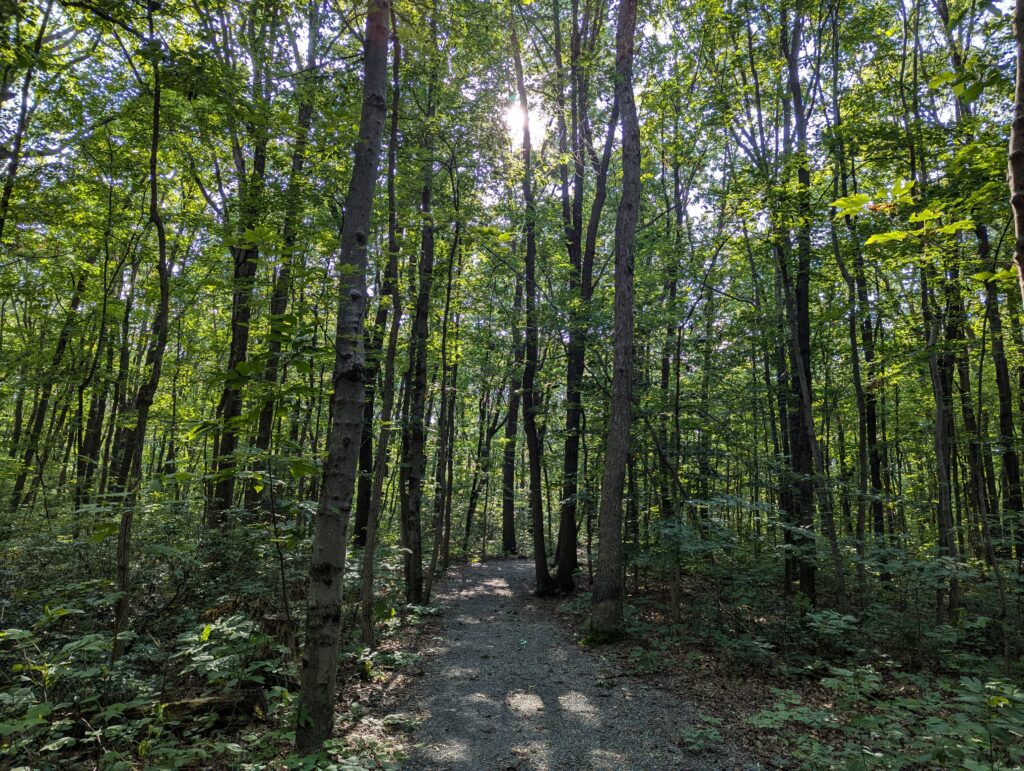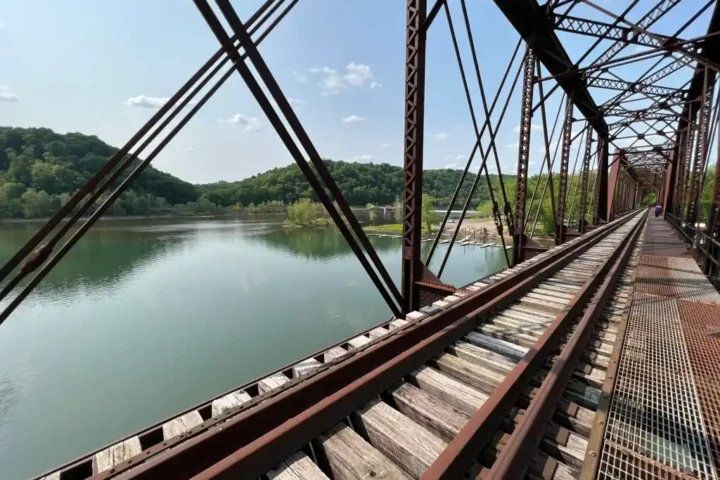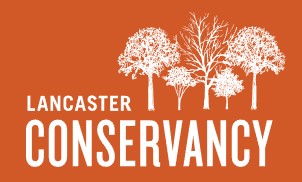Content copyright the author, copy and images shared with permission from Lancaster Conservancy.
Author: Brandon Tennis, Senior Vice President of Stewardship, Lancaster Conservancy.
At Lancaster Conservancy, we believe that everyone should have opportunities to experience nature, which is why we have made it a goal to create universal access (UA) trails on our preserves where possible. Compared to a typical nature trail, which may have large rocks and tree roots to scramble over or steep changes in elevation, UA trails have a smoother surface such as crushed stone, remain mostly flat, and are accessible to visitors with strollers, wheelchairs, walkers, or other mobility devices.

Mill Creek Falls Nature Preserve universal access trail (photo by Avery Van Etten).
UA trails create equity in access to Conservancy preserves by providing opportunities for community members with a variety of mobility needs to explore the outdoors. These trails benefit us all, whether you’re using a wheelchair or stroller or simply looking for a less strenuous way to connect with nature.
In addition to providing access to natural areas, trails create opportunities for the Conservancy to manage and mitigate harmful impacts of visitation that could damage waterways, rare plants, or sensitive ecosystems. It’s important for the Conservancy and preserve visitors to know that their visit has left no trace, and when we are able to provide engaging and well-marked trails, we can help encourage visitors to stay on designated trails to avoid negatively affecting the wild places we love to explore.
The Conservancy currently offers UA trails that take visitors through beautiful forests at Welsh Mountain Nature Preserve in Lancaster County and Mill Creek Falls Nature Preserve in York County. There is a third UA trail nearing completion at Clark Nature Preserve in Lancaster County, which will guide folks through a meadow ecosystem.

Welsh Mountain Nature Preserve universal access trail (photo by Avery Van Etten).
We are also in the planning phase to install a UA trail at Climbers Run Nature Center, which will traverse interpretive gardens connecting the Russo Barn to an observation deck and outdoor classroom, and at Shenks Ferry Wildflower Preserve, where a section of the Gamber Wildflower Trail is slated for improvements to meet universal accessibility standards. Additionally, the Hellam Hills Conservation Area Master Plan, developed in 2022, includes a UA trail proposal for the Robert A. Kinsley Nature Preserve.
In addition to the UA trails the Conservancy has created on our preserves, Conoy Wetlands and Shaw Family nature preserves are accessible via the multi-modal Northwest River Trail and Conewago Recreation Trail, respectively. These regional trails provide another opportunity for community members to enjoy the outdoors.
These trails provide universal access to Conservancy nature preserves in seven of the Conservancy’s 12 Conservation Areas. Identifying opportunities for UA trails using a regional lens is helping the Conservancy strive for equitable access to nature across all the local communities that we serve.
Lancaster Conservancy is an accredited nonprofit land trust that protects and restores natural lands for future generations. Since our founding in 1969 by local anglers, hunters and naturalists, the Conservancy has saved over 10,000 acres of land to protect the ecosystems and landscapes upon which we depend for food, clean water, clean air, economic and public health, and the restoration of the soul and spirit.




